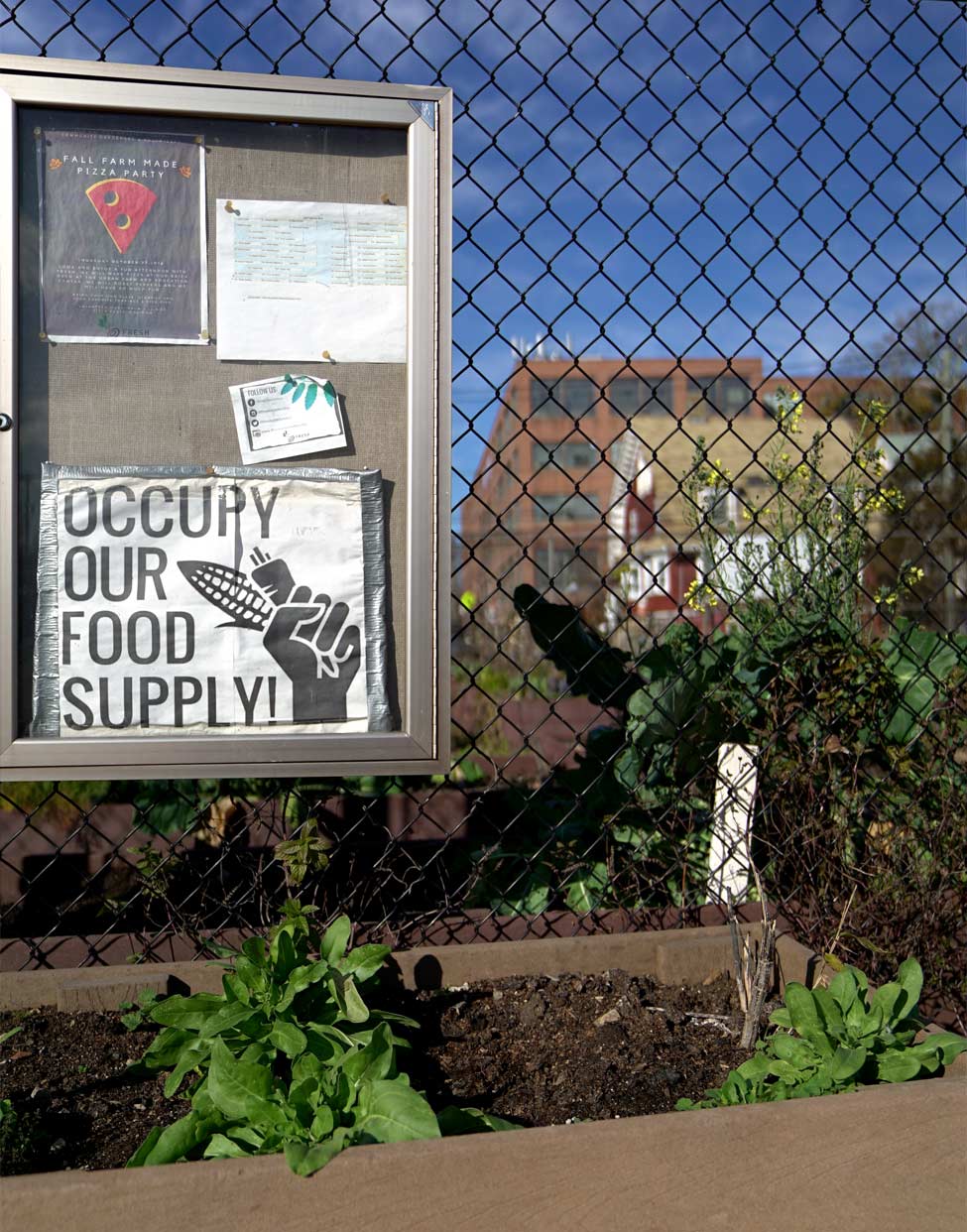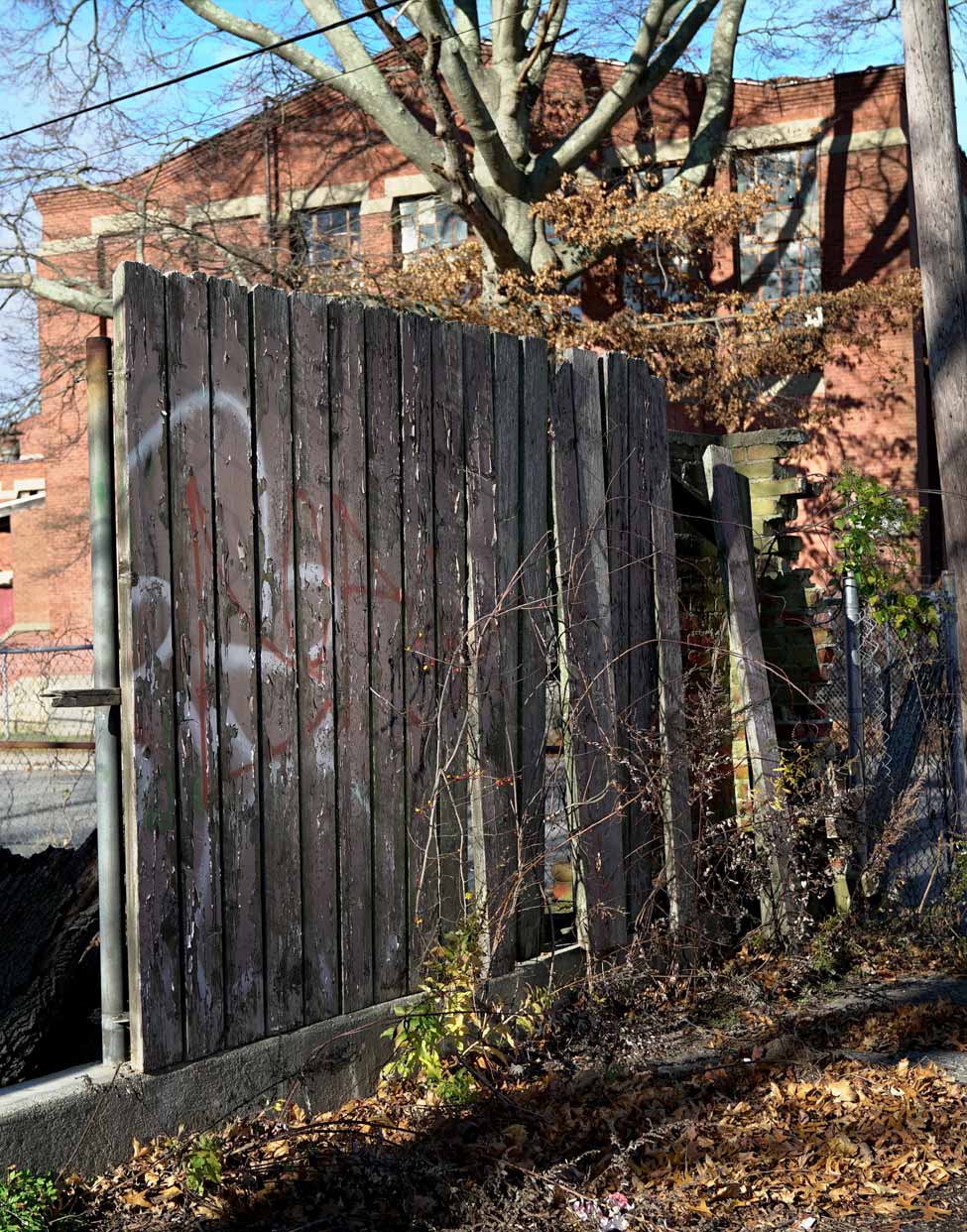Edible Landscapes
Urban design is powering social change in New London by turning desolate places into food spaces.
Andrea Wollensak looks down at the cracked and uneven concrete that represents the majority of the park at the corner of McDonald Street and Connecticut Avenue in New London.
“This space should work really well,” she says, describing how students in her public practice design course will take chalk and map out design ideas for the neglected city property so community members can better visualize how this cement landscape can be transformed.
The 12 students in Wollensak’s urban design course this spring are collaborating with local nonprofits to realize the vision for an “edible landscape” throughout New London, where garden beds and fruit orchards will line sidewalks, abut buildings or fill once neglected spots like the stale concrete and graffiti of McDonald Park.
Wollensak’s goal is tackling blight and lifting the community. The unifying theme is food.
“It’s what brings everyone together, right? Food,” says Wollensak, professor of art and the Judith Ammerman ’60 Director of the Ammerman Center for Arts and Technology.
By building on existing programs that have brought community and school gardens to New London, Conn students will help map the city’s food resources while designing a sustainable vision for the edible landscape.
“The course introduces students to creating social change through the power of design,” she says. “We explore human-centered design as an approach and method to problem-solving and innovation. So really connecting with communities—what I call co-creation—so that we’re not designing for but designing with.”
Students are partnering with FRESH (Food: Resources, Education, Security, Health) New London and Spark Makerspace, a new collaborative worksite and learning center for arts and technology. The class is funded by Conn’s Holleran Center for Community Action and Public Policy.
The partnerships came about in part through Conn’s Community Partnerships office, with help from Tracee Reiser, associate dean of community learning.
Together, the groups will tackle food insecurity and revitalization in the city Conn students call home.
One student is Quinlan Low ’19. Low, an architectural studies major, brings experience from her summer internship with an architecture firm in San Francisco, where she studied the pros and cons—including community impact—of developing a new park in the city’s Chinatown.
Rather than just talking about the theory of co-creation in the class, “what we design is going to be implemented into a community and will have an effect on individuals,” Low says.
FRESH CHANGE
As a nonprofit with established roots in New London, FRESH seeks social change through food justice and youth empowerment. The mission is to address the statistics that place New London among the poorest cities in the state—a city where a high percentage of residents still lack access to fresh, nutritious food.
In its 10 years serving New London, FRESH has helped drive a social shift toward urban agriculture. It has developed three active community gardens as well as gardens used as outdoor classrooms at the city’s public schools.
The city of New London approached FRESH to reimagine McDonald Park. Individual garden beds, fruit trees and a children’s space might replace the current concrete and graffitied fence—yet the true vision lies with the residents of the neighborhood who would use and oversee the park.
We want to “build leadership in New London for residents to reclaim space,” says Alicia McAvay, executive director of FRESH. “We’re here as facilitators and for support, but ultimately that space belongs to the city and the residents of that neighborhood.”
With a vision in place, Conn students can start to realize the possibilities for the park—and other potential sites for urban orchards, through purposeful and aesthetic design.
“What Conn really has to offer us is a host of skills and resources that as a small nonprofit in New London we don’t always have access to,” McAvay says.
“What I see this class doing is being able to take our grassroots work and research and present it in a cohesive and beautiful way.”
Wollensak plans to use walking tours with students through the city to capture both the physical and aesthetic characteristics of the town to help them develop a food map of the city and spot places beyond the park for future urban orchards. Additional locations include land behind Jennings Elementary School, at Bennie Dover Middle School and a spot behind Saint Francis House.
“We’re going to map the city, map the whole area, to visualize ways of thinking about better uses for empty spaces, and look at all the potential spaces for urban orchards,” she says.
And “we’re going to be exploring augmented reality”—computer-generated images that provide a composite view of the real world through mobile apps—“as a way to visualize” what these derelict spaces can become.


